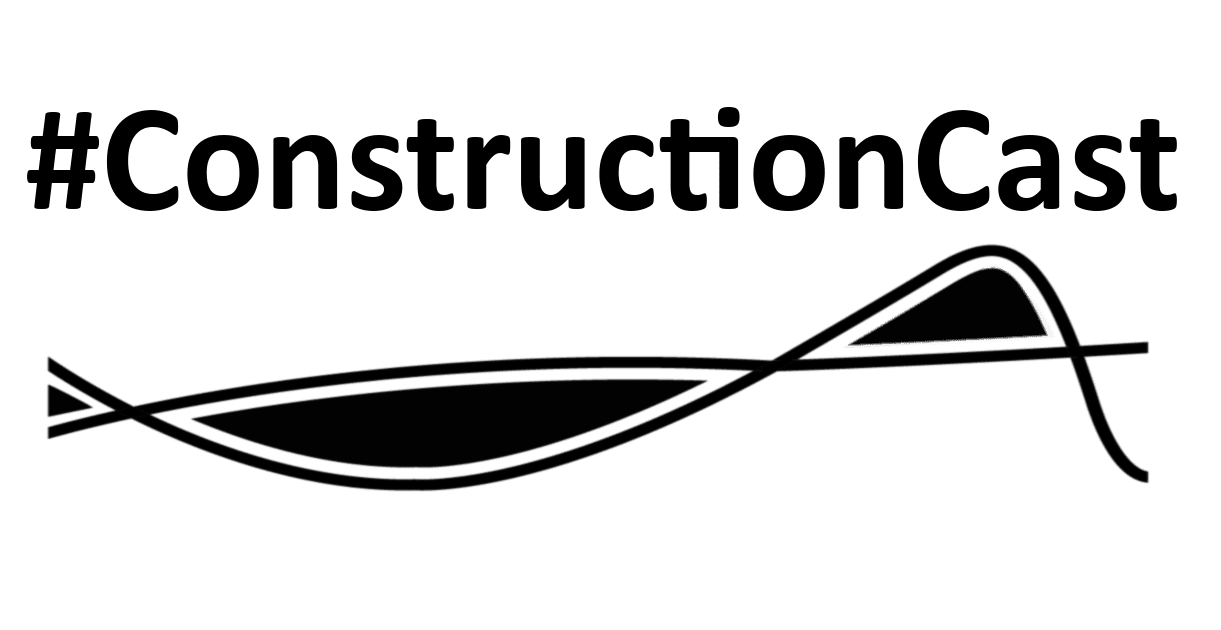This week took another look at the ongoing coronavirus both in Scotland and Malaysia. We also discussed major projects and NEC contracts. We were joined by Swee Im Tan, a barrister at 39 Essex Chambers in Malaysia, Christine Worthington, partner at law firm CMS in Glasgow and Geraldine Fleming, operations director for Driver Trett in Liverpool.
Asia and Malaysia
As usual we started by having a look around the world, firstly at Asia and Malaysia in particular. Swee tells us that Singapore is still in lockdown, although citizens have had some restrictions lifted ( and can now go out for a haircut) no construction is taking place. Hong Kong is vastly different, as we heard all the way back in week one, in that they’ve not had a lockdown as such. Malaysia has been in lockdown from 18th March. The restrictions are quite severe, you can go out for groceries or to get takeaway or medication, but walks and exercise are banned. On the 1st May, it was announced that from 4th May business could resume. This means you can now dine in at restaurants and more importantly for our discussions, construction sites can reopen.
However, there are different restrictions across the different states and those on either side of Kuala Lumpur are not opening up in the same way, so there is a little confusion. Gradually though, things are beginning to resume, and Swee notes that construction noise outside her home can now be heard.
Social distancing is creating challenges. On one site, just getting people onto site is taking 1.53 min per person – but there is at least one app developed to speed this up to 15 secs. Technology has been a theme of the pandemic, with many of our interviewees citing technology as providing solutions to the challenges faced.
Migrant Workers
There are also issues with migrant workforces. In Hong Kong most of workforce is from Mainland China. Many people had gone home for the lunar new year when China first started taking action, so couldn’t come back to work. In Singapore and Malaysia, migrant workers make up much of the construction workforce. The situation in Singapore has changed dramatically over the last few months.
In February, Singapore was held up as leaders around the world for their apparently successful efforts to control virus. But they are now seeing a substantial rise in cases, with migrant workers being part of the challenge. Many migrant workers are housed in dormitories, where the virus has spread like wildfire. Infections have now passed 200k in Singapore. There are similar worries in Malaysia. Lots of undocumented migrant workers make contract tracing really hard. Even those who are documented have a real fear of immigration and there are reports that they run away from testing centres.
Another unusual factor in Singapore and Malaysia is the number of workers who cross the border every day to go to work. Close to 300,000 commute between the two countries every day. This has not been allowed, so when the lockdown was first imposed many Malaysians stayed on in Singapore to work. But Singapore has since imposed its own lockdown making it even more difficult.
Swee is involved with the Lighthouse Club Kuala Lumpur Caring is Sharing Campaign. Many construction workers are going hungry as a result of lack of work during the lock down. 20p can provide a simple meal of rice, lentils and eggs – and the monies being collected go a long way to alleviating basic needs. Take a look here for more: https://www.facebook.com/LighthouseClubKL/.
Similarly, in the UK there were reports earlier this week about overcrowding on Aer Lingus flights between Belfast and London. If like us, you have ever taken those early morning flights you’ll know they are full of construction workers – we’ve even joked in the past about holding breakfast seminars on the plane! There was outrage in the British press, but with work continuing on site, these workers need to travel to work.
The Scottish Position
Christine tells us that the story has been very different in Scotland. Construction sites have topped operating and currently remain closed. The Scottish Government is devolved so has the ability to create its own laws in certain areas. Whilst the base legislation for Coronavirus Act 2020 is the same across the UK, the Scottish government has taken a substantially different approach. Even from the early days of lockdown, when statements said UK sites can stay open, the Scottish government statement said sites should close. The Scottish First Minister went from expressing a view at press conferences to written guidance, yet not all sites closed. Then further guidance which specifically listed which types of sites could remain open. Since the 6th April when the guidance was issued, it is estimated that 95% of construction sites halted work and have remained closed.
During this time period, the industry has been trying to demonstrate to the government that they can follow safe guidance and are aware of the regulations in the hope that they might show some leeway for the industry and allow work to carry on.
It is difficult for a lot of contractors and has the potential to cause big discrepancies between the fortunes of English and Scottish firms. England-based construction firms are still working in England, but a couple 100 miles up the road in Scotland sites are closed. The Scottish Government has acted with the very best intentions to halt the virus, but the negative effect means there will be harsher difficulties for Scottish contractors to face. An English based contractor also working in Scotland would have less of a cash flow problem because they have sites in England.
However, this could begin to change. Rumours are that Thursday’s announcement will mention construction. The First Minister is aware that construction needs special thought process. Maybe we’ll see work back on site on 18th May – but this is yet to be confirmed and we will have to wait and see.
NEC and COVID-19
Moving onto more general issues, Geraldine has been providing lots of advice over the last few weeks. For main contractors it has been important to review contracts and make sure notices have been issued when and how they should have been issued. She’s also been looking at whether issues are pure COVID-19 / force majeure issue or whether the issues are wider, such as access or designer / architects furloughed etc. Of course, she expects we will have restart issues too. So far, Geraldine has not dealt with any formal disputes, but clients are thinking about issues that could arise.
In relation to NEC, Geraldine notes that she has never heard so many people mention force majeure. Z-clauses, continue to cause problems. Because of these amendments and the fact that each project is unique, each project needs to be looked at separately and individually. For example, in one contract the main contractor was entitled to claim time and money but they ‘z-claused’ this out of the sub-contract so the subcontractor could only able to claim for time.
Geraldine also has sympathy for planners. The NEC expects ‘foresighted, cooperative management’. But how do you factor in productivity problems going forward with social distancing it’s going to be really difficult. She jokes that she imagines there will be a rush on crystal balls from Amazon…
Records, Records, Records.
Records and demonstrating cause and effect is a hugely important part of NEC3. Geraldine highlights the importance of having pre COVID-19 programme, that it has been checked and updated to immediately before COVID-19 issues.. Then impacting the issues from coronavirus and any other issues into that programme so you can be crystal clear what the causes and impacts have been. Disruption claims are notoriously difficult to manage. There may be lots of entitlement but proving it will be difficult and record keeping will be absolutely vital.
Christine also reminds us that progress may be slower in Scotland. The Health Protection (Coronavirus)(Restrictions)(Scotland) Regulations legislation differ from the equivalent regulations in England in that the 2m distancing is mandatory not just guidelines.
Major Projects
Moving on to major projects, Swee explains that from her window she can see a 16-acre mixed development site with 12 tower cranes. For the last few weeks it has been sitting empty. The development is a mixture of residential and office space and a large retail a mall – typical of the high-end development you see in the region. But malls are already on a downturn and now could take a major hit. We’ll likely be working from home a lot more, so that could also impact office units.
Further down the road a 118 tower and 2nd tallest building in world is being developed. Again, this includes a mix of serviced apartments, office space and a hotel. Infrastructure will always be needed, but when you look at these big developments you really do have to wonder what the future of them could be.
Similarly in the UK, Christine talks of leisure/retail developments that have put on hold while people are taking 6 months to decide what to do. It will be interesting to see how quickly decisions will be made. However, those developments funded by the big pension funds, who have a slower decision-making process might carry on and go ahead and take a bit longer before they come up with alternative ways to invest the capital of pension funds.
NEC Generally
Over the last 10 years we’ve seen use of NEC contracts increase. 10 years ago, it was barely used and now the form features in around 70% of the workload at Christine’s firm. You occasionally see a bit of FIDIC on windfarm types jobs, but NEC is most common for infrastructure including projects such as healthcare and hospitals.
We are also seeing more projects using NEC4. Geraldine notes that there are some important changes, that were described by the publishers of the NEC as ‘evolution rather than revolution’. Key features of NEC4 include the following:
- NEC4 properly embraces the use of email and document management systems, but this does rely on users to fill out the contract data properly.
- Payment applications are mandatory.
- Programme acceptance has changed. If the Project Manager does not respond and the Main Contractor highlights this lack of response, there might be deemed acceptance of the Main Contractor’s programme – but this will probably be z-claused out in lots of instances.
- The new form also embraces collateral warranties.
It seems that for both the UK and Scotland, we are waiting on announcements later this week on what the next stage in this journey may look like and when we can all get back to work.
Around the world, we are going to see major changes in the types of projects we see going forward. Life and workplaces may never be the same again and we will see that reflected in the buildings we see being built. ConstructionCast will pick up on these changes in the coming weeks.

